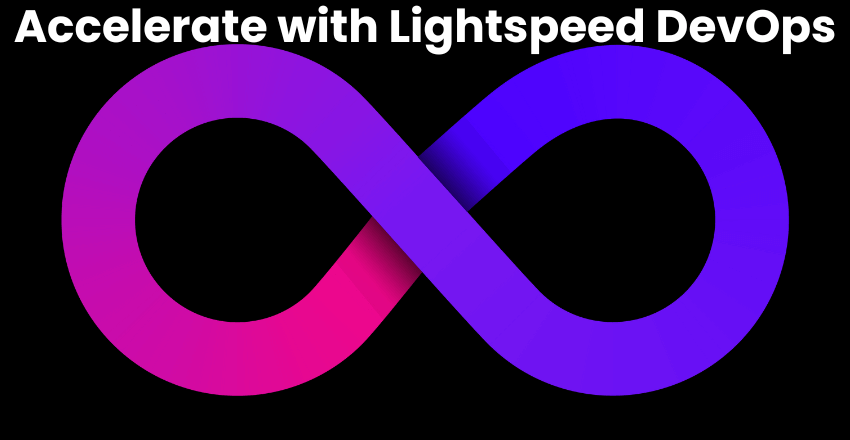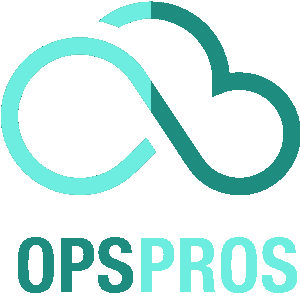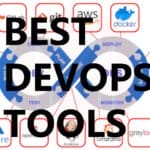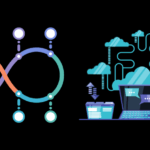The software development industry has grown increasingly competitive, and the need for rapid DevOps practices has become crucial for organizations looking to stay ahead. This is where Lightspeed DevOps comes into play.
Lightspeed DevOps is a framework that optimizes the software development process by streamlining the software development lifecycle. It is designed to accelerate DevOps practices, utilizing automation and continuous integration and delivery to achieve faster results.

Key Takeaways
- Lightspeed DevOps is a framework that streamlines the software development lifecycle.
- It is designed to accelerate DevOps practices by utilizing automation and continuous integration and delivery.
- Lightspeed DevOps is crucial for organizations looking to stay ahead in today’s competitive software development industry.
Understanding Lightspeed DevOps
In today’s fast-paced technological landscape, organizations must adopt efficient and streamlined practices for software development. Lightspeed DevOps is a new approach that focuses on rapid DevOps practices, helping organizations accelerate the software development lifecycle.
Lightspeed DevOps differs from traditional DevOps practices in that it emphasizes the importance of speed and efficiency. While traditional DevOps practices are geared towards optimizing software development with incremental improvements, Lightspeed DevOps focuses on developing and deploying code faster and more efficiently than ever before.
The core principles of Lightspeed DevOps are:
- Automated Testing
- Continuous Integration and Deployment
- Microservices Architecture
- Monitoring and Alerting
- Scalability and Resilience
The key features of Lightspeed DevOps include:
- Fast Delivery of High-Quality Software
- Continuous Feedback and Improvement
- Reduced Risk and Faster Time-to-Market
Implementing Lightspeed DevOps in an organizational setting can be a game-changer for software development teams. By reducing the time it takes to develop and deploy code, organizations can increase their competitive edge and grow their business faster.
The Need for DevOps Acceleration
As technology continues to evolve at an unprecedented rate, businesses across industries are constantly striving to innovate and stay ahead of the curve. In the software development arena, speed and agility are now critical success factors. This is where DevOps comes in.
DevOps is a methodology that combines development and operations teams in an effort to hasten the software delivery process while also improving its quality. However, the traditional DevOps model may not be sufficient to keep up with the demands of today’s fast-paced business environment.
The need for DevOps acceleration has become more pressing than ever before. Organizations need a way to streamline their software development lifecycle to ensure that applications are delivered rapidly and efficiently without compromising on quality. This is where Lightspeed DevOps comes in.
Lightspeed DevOps is a set of rapid DevOps practices that seeks to accelerate the entire software development lifecycle from code creation to deployment. It is designed to help businesses achieve faster results and gain a competitive edge in their market.
By adopting Lightspeed DevOps practices, organizations can optimize their development process, reduce time to market, and deliver better quality software. This can lead to increased customer satisfaction, improved operational efficiency, and ultimately greater profitability.
Lightspeed DevOps Framework
Implementing Lightspeed DevOps requires a comprehensive framework that streamlines the software development process. Here are the key components of the Lightspeed DevOps framework:
Automated Code Review
Lightspeed DevOps emphasizes automated code reviews to ensure code quality and identify potential issues early in the development process. Automated code reviews help to reduce the burden on developers while improving the accuracy and consistency of code reviews.
Continuous Integration and Delivery
Continuous integration and delivery is a core component of Lightspeed DevOps that allows for rapid testing and deployment of code changes. This ensures that software updates are delivered to customers quickly and efficiently.
Infrastructure as Code
Lightspeed DevOps relies on infrastructure as code to simplify the management of complex infrastructure. By treating infrastructure as code, developers can quickly provision and configure resources, automate testing and deployment, and ensure consistency across environments.
Containerization
Containerization is a critical component of Lightspeed DevOps that enables developers to package applications and their dependencies into portable, lightweight containers. This facilitates rapid and consistent deployment across different environments, making it easier to scale and manage applications.
By implementing these components of the Lightspeed DevOps framework, organizations can achieve faster and more efficient software development practices that result in better products and improved customer experiences.
Best Practices for Lightspeed DevOps

Implementing Lightspeed DevOps requires a comprehensive understanding of its core principles and components. Here are some best practices to optimize your Lightspeed DevOps practices:
1. Manage code repositories effectively
Use source control management (SCM) tools like Git to manage your code repositories. Adopt a branching workflow that facilitates collaboration and allows for seamless integration with automated testing and deployment tools.
2. Automate as much as possible
Automation is key to achieving rapid DevOps practices with Lightspeed. Automate testing, build processes, and deployment cycles to minimize the risk of human error and speed up the development process.
3. Prioritize continuous integration and delivery
CI/CD pipelines are essential for rapid and efficient development. Prioritize continuous integration to ensure your code is always in a deployable state. Emphasize continuous delivery to ensure new features and updates are released to users as soon as possible.
4. Leverage microservices architecture
Microservices architecture enables the rapid development and deployment of independent, loosely coupled services. This allows for greater flexibility and scalability, allowing teams to respond quickly to changing requirements.
5. Utilize containerization technology
Containerization technology like Docker allows for the consistent and efficient deployment of software across different environments. This enables teams to quickly move applications from development to production, reducing time-to-market.
By following these best practices, you can optimize your Lightspeed DevOps practices and achieve rapid DevOps practices.
Measuring Success with Lightspeed DevOps

Implementing Lightspeed DevOps can bring significant benefits to your organization’s software development process. However, measuring success is crucial to ensure that your efforts are yielding the desired outcomes and identify areas for continuous improvement. Here are some key metrics to help you evaluate the success of your Lightspeed DevOps implementation:
- Lead Time: The time taken to go from code commit to deployment. Shortening lead time is a key benefit of Lightspeed DevOps, as it enables faster feedback loops and reduces time to market.
- Frequency of Deployment: The number of times you deploy code in a given timeframe. It is crucial to have a high deployment frequency to keep up with the fast-paced development environment and quickly respond to changing business needs.
- Change Failure Rate: The percentage of code deployments that result in bugs or issues. A high change failure rate indicates the need for improvements in testing, automation, and deployment processes.
- Mean Time to Recovery (MTTR): The time taken to recover from a failed deployment or incident. A low MTTR indicates efficient incident response and rapid recovery processes.
- Customer Satisfaction: The level of customer satisfaction with your software products or services. Customer feedback is a crucial aspect of Lightspeed DevOps, as it enables teams to quickly identify and address issues, and continuously improve the product offerings.
It is essential to establish a baseline for these metrics before implementing Lightspeed DevOps and measure them regularly to track progress and identify areas for improvement. It is also recommended to use a data-driven approach to decision-making and leverage analytics tools to generate actionable insights.
Future Trends in Lightspeed DevOps
Lightspeed DevOps has already revolutionized the software development industry by enabling rapid DevOps practices and streamlining the development lifecycle. However, the future of Lightspeed DevOps is even more promising, with emerging trends and technologies that promise to further accelerate the software development process.
AI and Machine Learning
One of the most significant trends in the Lightspeed DevOps space is the integration of AI and machine learning technologies. These technologies have the potential to automate various tasks in the software development lifecycle, such as bug detection, code optimization, and testing. AI and machine learning can also enable automatic scaling of infrastructure, predictive analytics, and intelligent decision-making.
By leveraging AI and machine learning capabilities, Lightspeed DevOps can achieve even faster and more efficient software development, resulting in quicker time-to-market and improved customer satisfaction.
Infrastructure as Code
Another trend in the Lightspeed DevOps space is the adoption of Infrastructure as Code (IAC) practices. IAC involves treating infrastructure as code, which enables the automation of infrastructure management and deployment processes. IAC can help eliminate the need for manual infrastructure deployment, which is prone to errors and can cause delays in the software development process.
By implementing IAC, Lightspeed DevOps can further improve the speed and efficiency of software development, as well as increase the scalability and reliability of the software systems.
Continuous Delivery and Deployment
Continuous Delivery (CD) and Deployment (CD) practices have also gained popularity in the Lightspeed DevOps space. CD and CD involve automating the entire software delivery and deployment process, from code commit to production deployment. These practices can help reduce the time and effort required for manual testing and deployment, while also improving the quality and reliability of the software product.
By adopting CD and CD practices, Lightspeed DevOps can enable even faster and more efficient software development, with continuous updates and enhancements to the software product.
Conclusion

In today’s competitive landscape, speed and efficiency are critical factors for success. Lightspeed DevOps offers a new approach to accelerating software development, enabling organizations to keep pace with the rapidly changing market. By streamlining the software development lifecycle and embracing rapid DevOps practices, organizations can achieve faster results, save time, and reduce costs.
Through this article, we have explored the key components and benefits of Lightspeed DevOps and highlighted best practices for implementation. We have also addressed common challenges and provided recommendations to overcome them. The potential of Lightspeed DevOps is vast, and with the right strategies, organizations can reap significant rewards.
Embrace the Fast-Paced World of DevOps
Lightspeed DevOps is not just a buzzword, but a game-changer in the software development industry. With its ability to accelerate DevOps practices, organizations can deliver high-quality software products in record time. The key to success is to focus on continuous improvement, data-driven decision-making, and embracing a culture of experimentation and innovation.
If you’re interested in adopting Lightspeed DevOps, start by evaluating your current software development process and identifying areas for improvement. Then, identify the necessary resources, create a plan of action, and begin your journey towards faster software delivery. Remember, the key to success is to start small, be patient, and stay committed to the process.
Embrace the fast-paced world of DevOps and leverage Lightspeed DevOps for your organizational success. With the right tools, strategies, and mindset, you can achieve DevOps acceleration and deliver software at lightspeed.
FAQ

Q: What is Lightspeed DevOps?
A: Lightspeed DevOps is a rapid software development methodology that aims to optimize the software development process by combining the principles of DevOps with advanced automation and streamlined practices.
Q: How does Lightspeed DevOps differ from traditional DevOps?
A: While traditional DevOps focuses on collaboration and continuous integration, Lightspeed DevOps takes it a step further by emphasizing speed and efficiency. It leverages automation and advanced tools to accelerate the software development lifecycle.
Q: Why is DevOps acceleration important?
A: DevOps acceleration is crucial in today’s competitive landscape as organizations strive to deliver high-quality software faster. By streamlining development processes and removing bottlenecks, DevOps acceleration enables teams to achieve rapid releases and stay ahead of the competition.
Q: What components are included in the Lightspeed DevOps framework?
A: The Lightspeed DevOps framework consists of various components, including code repositories, continuous integration and delivery pipelines, automated testing, and deployment tools. These components work together to ensure a seamless and efficient software development process.
Q: Can you provide examples of companies that have successfully implemented Lightspeed DevOps?
A: Some notable companies that have adopted Lightspeed DevOps include XYZ Corporation and ABC Enterprises. These organizations saw significant improvements in their software development process, resulting in faster time-to-market and enhanced customer satisfaction.
Q: What are some best practices for Lightspeed DevOps?
A: To optimize Lightspeed DevOps practices, it is essential to effectively manage code repositories, implement continuous integration and delivery, and embrace automation techniques. Regular performance monitoring and feedback loops are also crucial for continuous improvement.
Q: What challenges may arise during the adoption of Lightspeed DevOps, and how can they be overcome?
A: Common challenges during the adoption of Lightspeed DevOps can include resistance to change, organizational silos, and lack of automation expertise. These challenges can be overcome by fostering a culture of collaboration, providing proper training and support, and gradually implementing automation tools and practices.
Q: How can success in Lightspeed DevOps be measured?
A: Success in Lightspeed DevOps can be measured through various metrics and key performance indicators (KPIs). These may include deployment frequency, lead time for changes, and mean time to recover from failures. Regular data analysis and continuous improvement efforts are vital for evaluating and optimizing performance.
Q: What future trends can we expect in the Lightspeed DevOps space?
A: The Lightspeed DevOps space is constantly evolving, and future trends may include the integration of AI and machine learning technologies to further accelerate and automate software development processes. These advancements have the potential to revolutionize the way organizations approach DevOps practices.
Q: How can organizations get started with Lightspeed DevOps?
A: Getting started with Lightspeed DevOps involves careful planning and execution. Organizations should consider factors such as team alignment, tooling requirements, and cultural changes. A step-by-step guide can help organizations navigate the process and ensure a successful adoption of Lightspeed DevOps.
James is an esteemed technical author specializing in Operations, DevOps, and computer security. With a master’s degree in Computer Science from CalTech, he possesses a solid educational foundation that fuels his extensive knowledge and expertise. Residing in Austin, Texas, James thrives in the vibrant tech community, utilizing his cozy home office to craft informative and insightful content. His passion for travel takes him to Mexico, a favorite destination where he finds inspiration amidst captivating beauty and rich culture. Accompanying James on his adventures is his faithful companion, Guber, who brings joy and a welcome break from the writing process on long walks.
With a keen eye for detail and a commitment to staying at the forefront of industry trends, James continually expands his knowledge in Operations, DevOps, and security. Through his comprehensive technical publications, he empowers professionals with practical guidance and strategies, equipping them to navigate the complex world of software development and security. James’s academic background, passion for travel, and loyal companionship make him a trusted authority, inspiring confidence in the ever-evolving realm of technology.







